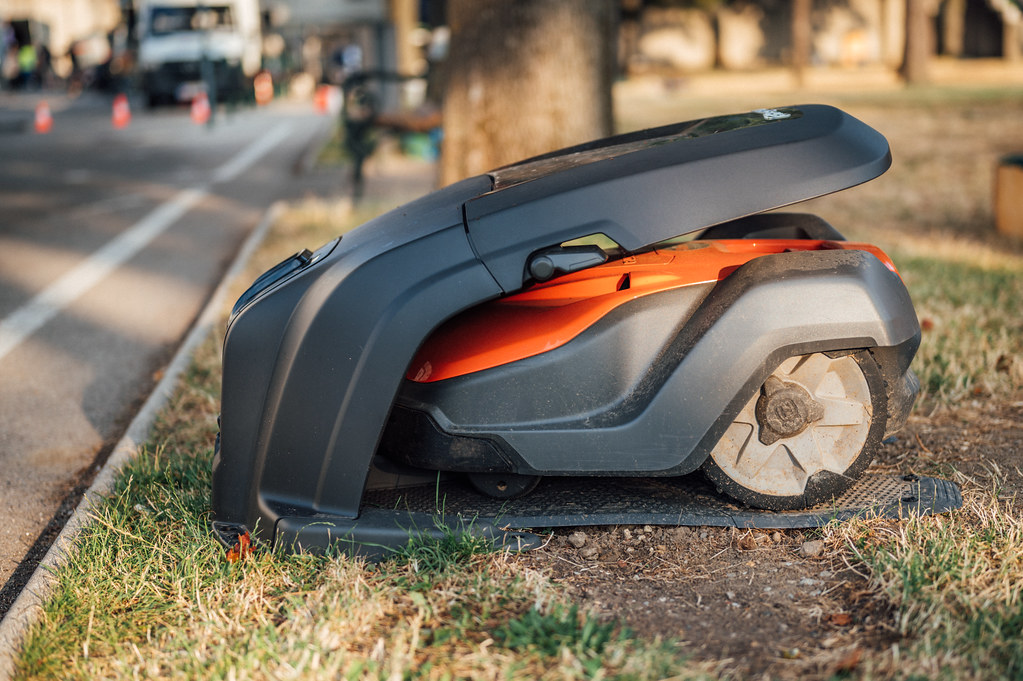The advent of robot lawn mowers has transformed lawn care from a labor-intensive task to an automated process. These devices promise convenience, efficiency, and a perfectly manicured lawn with minimal effort. However, like any technology, they come with their own set of advantages and disadvantages. In this article, we will explore the pros and cons of using a robot lawn mower to help you decide if it’s the right choice for your lawn care needs.

Pros of Using a Robot Lawn Mower
1. Time-Saving Convenience
Reduced Manual Labor
One of the primary benefits of a robot lawn mower is the significant reduction in manual labor. Once set up, these mowers operate autonomously, allowing homeowners to save the time and effort usually spent on mowing the lawn.
Automated Scheduling
Robot lawnmowers can be programmed to operate on a set schedule. This means your lawn can be maintained regularly without you having to remember or find time to mow it yourself. Whether you’re at work, on vacation, or simply relaxing at home, your lawn remains perfectly trimmed.
2. Consistent Lawn Maintenance
Regular Mowing
Consistent and regular mowing is key to a healthy lawn. robot lawn mower can be programmed to mow several times a week, which is beneficial for the grass as it encourages healthier growth and reduces weed proliferation.
Uniform Cutting
These mowers provide a uniform cut every time, ensuring that no areas are missed. This consistent cutting pattern helps in maintaining an even and aesthetically pleasing lawn.
3. Environmental Benefits
Low Emissions
Most robot lawn mowers are battery-powered, making them an environmentally friendly alternative to traditional gas-powered mowers. They produce no direct emissions, contributing to a reduction in air pollution and greenhouse gases.
Mulching Capabilities
Many models come with mulching blades that chop grass clippings into fine pieces. These clippings are then left on the lawn, where they decompose and act as a natural fertilizer, enriching the soil without the need for chemical fertilizers.
4. Cost Efficiency
Lower Operating Costs
While the initial investment in a robot lawn mower can be high, the long-term operating costs are generally lower. There are no fuel costs, and maintenance requirements are minimal compared to traditional mowers.
Durability and Longevity
Robot lawn mowers are built to last. Their durable construction means fewer repairs and replacements over time, which can result in cost savings in the long run.
5. Advanced Technology
Smart Features
Modern robot lawn mowers come with a variety of smart features, including GPS navigation, app control, and voice commands. These features enhance convenience and allow for more precise control over the mowing process.
Safety Features
Safety is a significant concern with any lawn mower. Robot mowers come equipped with various safety features, such as sensors that detect obstacles, lift and tilt sensors that stop the blades if the mower is lifted, and child locks to prevent unauthorized use.
Cons of Using a Robot Lawn Mower
1. High Initial Cost
Upfront Investment
The initial cost of purchasing a robot lawn mower is significantly higher than that of a traditional mower. While the long-term savings can offset this expense, the upfront cost can be a barrier for many homeowners.
2. Installation and Setup
Boundary Wire Installation
Many robot lawn mowers require the installation of a boundary wire around the perimeter of the lawn and any obstacles. This setup process can be time-consuming and may require professional installation.
Initial Configuration
Configuring the mower’s settings and programming it to operate correctly can be challenging, especially for those who are not tech-savvy. There is a learning curve involved in getting the mower up and running efficiently.
3. Limited Handling of Complex Terrains
Slopes and Obstacles
While many robot lawn mowers can handle moderate slopes and navigate around obstacles, they may struggle with very steep inclines, tight corners, or heavily obstructed areas. Lawns with complex layouts may require additional adjustments or limitations.
Coverage Limitations
Each model of robot lawn mower has a maximum coverage area it can handle. For very large lawns, multiple units may be required, which can increase the overall cost and complexity of the system.
4. Maintenance Requirements
Regular Cleaning
Robot lawn mowers require regular cleaning to remove grass clippings and debris from the blades, wheels, and sensors. Failure to do so can impact performance and longevity.
Battery Maintenance
The battery is a critical component of the robot lawn mower. Over time, the battery will degrade and may need to be replaced. Proper battery maintenance and timely replacement are essential to ensure consistent operation.
5. Potential for Theft or Vandalism
Security Concerns
Robot lawn mowers can be targets for theft or vandalism, especially if they are left unattended. While many models come with security features like PIN codes and GPS tracking, the risk remains, and additional security measures may be necessary.
Conclusion
Robot lawn mowers offer numerous benefits, including time-saving convenience, consistent lawn maintenance, environmental advantages, cost efficiency, and advanced technology features. However, they also come with some drawbacks, such as high initial costs, installation and setup challenges, limitations in handling complex terrains, maintenance requirements, and potential security concerns.
Weighing the pros and cons can help you determine if a robot lawn mower is the right choice for your lawn care needs. For many homeowners, the benefits outweigh the disadvantages, making these innovative devices a worthwhile investment in the future of lawn maintenance. As technology continues to advance and prices become more competitive, robot lawn mowers are likely to become an increasingly common sight in residential yards.
